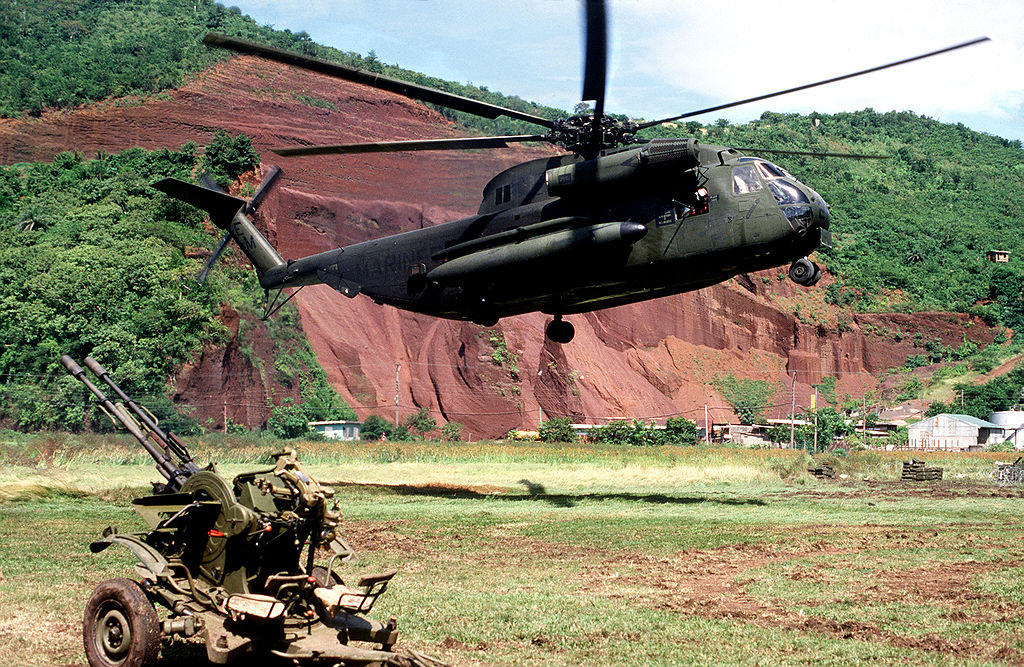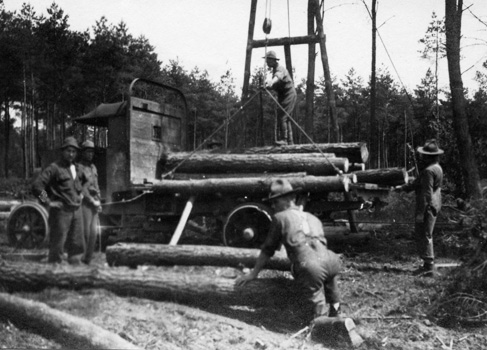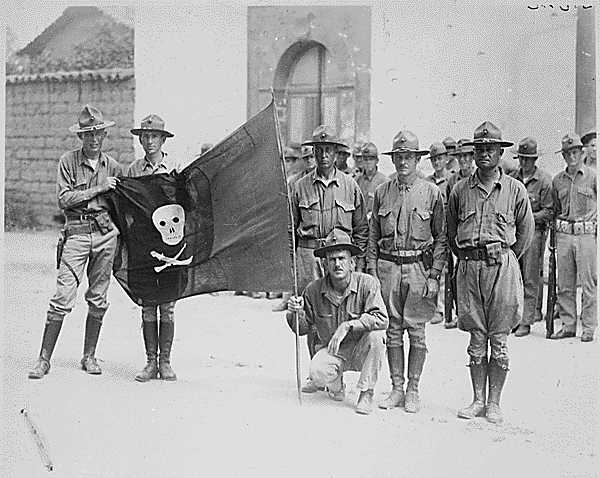With all this talk lately about attempted American covert action in the Caribbean and Latin America — and the Secretary of State having to remind everyone that the United States Government wasn’t involved in the botched attempt — I thought it prudent to remind everyone of what actual American military action in the region looks like. Operation Urgent Fury, the U.S.-led invasion of Grenada, began on October 25th of 1983 and lasted until December 15th. Though the “invasion” portion itself only took three days. Nice and short.
For relevance, please note that the island of Grenada is less than 400 miles from where the failed Silvercorp operation personnel were captured. And only 100 miles north of Venezuela itself.
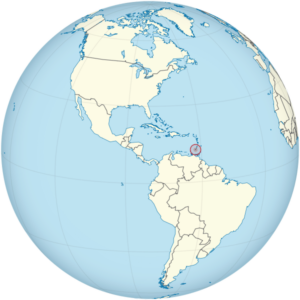
What’s relevant about this invasion is that there were a ton of special operations and airborne forces involved. Work got done. But also lives were lost. And, politically, there were a lot of weird players on the island that absolutely shouldn’t’ve been in a Commonwealth country with a heavy U.S. presence — not in that chapter of the Cold War, anyway.
The engagement seriously highlighted both communication and coordination issues between (supposedly) joint forces — not just SOF-to-SOF coordination, but also Conventional-to-Conventional and SOF-to-Conventional (and vice versa) — as well as Branch-to-Branch. I won’t split hairs too much here, as this is just an overview from which you might take a more researchful look, but one example involved Air units not speaking the same “language” as the Ground units they were supposed to be supporting through Close Air Support. (And it was Air people on the ground speaking to Air people in the air…)
This obvious spectrum of cohesion issues led to a series of Department-level investigations, which culminated in the Goldwater-Nichols Act.
So, Grenada was having some hard times, politically, at the time. That information is not exactly directly relevant to this tale. So… I’m skipping it. If Cold War Caribbean Politics is your jam, have at it. We’re here today to highlight the ‘Mericans who helped sort that all out.
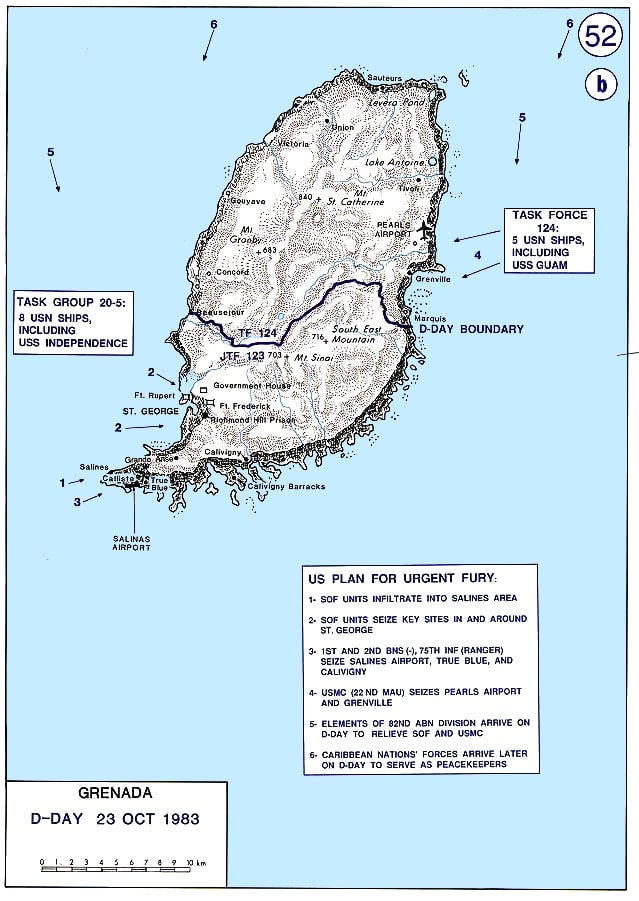
First of all, two days prior to H-Hour, SEAL Team Six deployed on a Special Reconnaissance mission. Horrible weather completely screwed their insertion, and four SEALs immediately sank into the ocean and drowned. (One reason we developed AFSOC Special Operations Weather Teams.) The rest of the SR team had to evade an enemy patrol boat while in a zodiac with a flooded engine. Unfortunately, all that necessitated that the reconnaissance mission be aborted, losing valuable intelligence.
Another Special Reconnaissance mission the following day got cancelled, as well. And again, due to inclement weather. (Where are my SOWTs?) Thus, the assault force(s) heading for Point Salines had just about zero intelligence as they dropped out of their C-130s onto the objective. Not a problem, RLTW (Rangers Lead the Way). And this operation was a *textbook* Ranger mission, at the time.
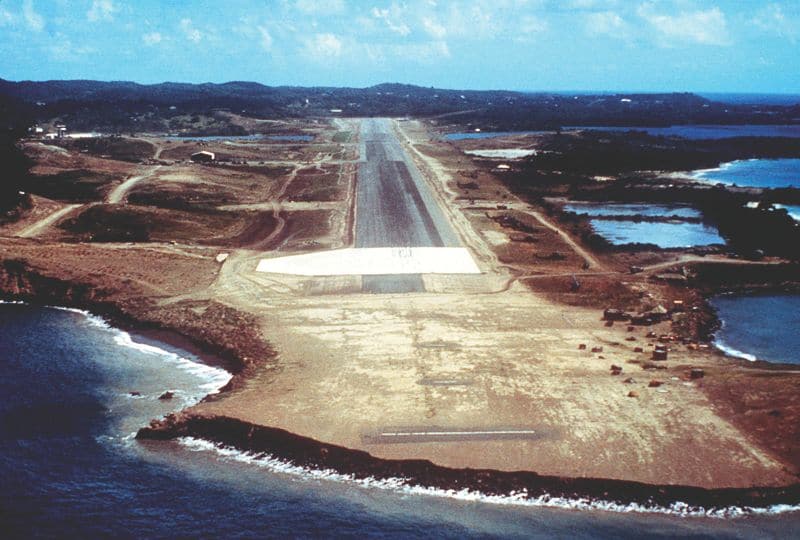
Aside from the operational preparation portion (the recon, etc.), like the French and Indians, the U.S. started this show before dawn — 0500 local, 25OCT83. (Probably while people CONUS were just getting back home from all-night breakdance duels, I imagine.) Operational Commander was United States Navy Vice Admiral Joseph Metcalf, III, Second Fleet Commander. U.S. forces numbered ~7300. Enemy forces numbered ~2100. So no biggie.
The morning of the first day consisted of Grenada being hit by *TWO* (2) Ranger Companies combat jumping onto Port Salines International Airport. UNDER. HEAVY. FIRE.Accompanied by USAF Combat Controllers (CCT) and Tactical Air Controllers (TACP; attack controllers), and covered by AC-130 gunships, the Rangers had to adjust their orders at the last minute. Originally, the plan was to land and run off the planes. So, changing that plan to jumping out under fire was a pretty BIG change…
Now, I wasn’t there. I was 8. But I assume that mission change order basically went something like this: “Rangers! FRAGO. We’re jumping.” And there was a unified resounding chorus of “Hooah” issued in affirmation. Then dudes started checkin’ their Ranger buddies and making sure everything was good to go for the first U.S. combat jump in a hot minute.
As these Rangers descended — beginning at 0530 — Anti-Aircraft fire was lighting up everything and everyone. Once on the ground, the Rangers and their USAF teammates wasted no time… but definintely wasted plenty of bad guys. While the Rangers cleared the airport, the CCTs (Combat Control Specialists) took the tower and started stacking aircraft for the follow-on forces, and the TACPs (Tactical Air Control Party) began sustained Close Air Support (CAS) operations.
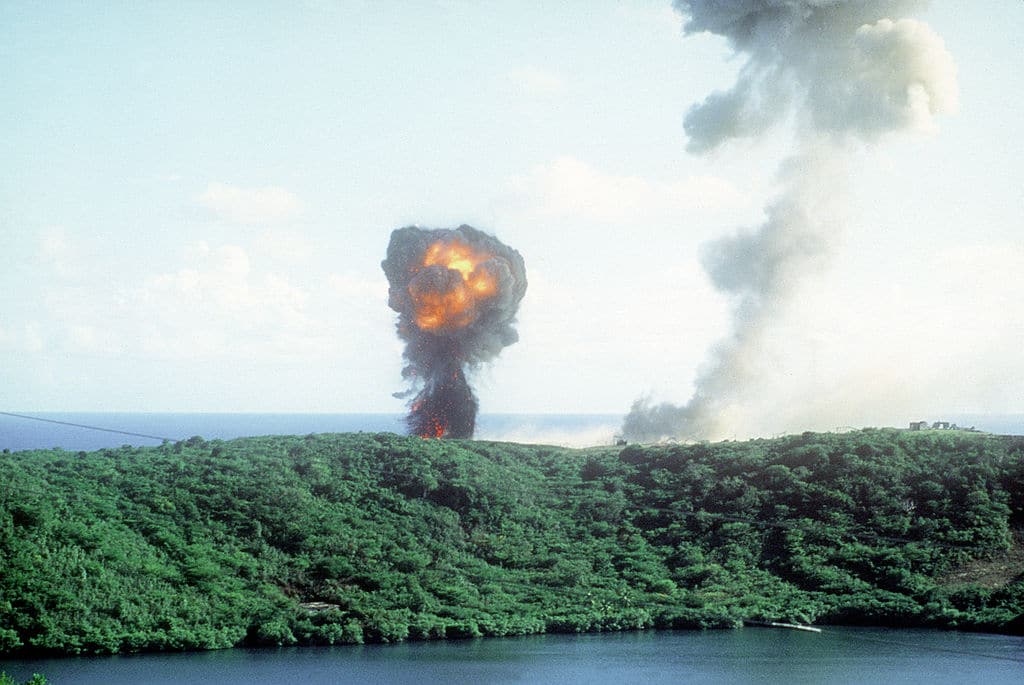
Outside the airfield, the Rangers were jacking construction equipment to bring back to the airport in order to clear the runway for aircraft to land (one reason their planes couldn’t land). By 1000, planes began to land. Vehicles and gear arrived first. Point Salines IAP was the staging point for the vast majority of forces. Rangers continued to spread out and assault follow-on objectives, while troops at the airport waited for the other troops to show, so THEY could move out. By 1400, planes were spilling out 82nd Airborne Division troops all along the runways.That initial objective was so American by mid-afternoon, there should’ve been a drive-in and a roller skating rink onsite. But not all dreams come true…
Friendly forces killed in action on day one: 5 Rangers.
Elsewhere prior to H-Hour, SEAL Team 4 ran a beach recon (yet another textbook mission for that unit) of Pearls Airport, the other airfield on the island. They ingressed, dodging patrols and more crappy weather, creeped & peeped, and egressed. Their assessment led to a force successfully landing air mobile at exactly the same time the Rangers were starting to drop from the skies elsewhere on the island. The 2nd Battalion, 8th Marine Regiment, was poised for a classic amphibious assault. However, the SEALs’ recon found the beach empty, but un-amphibious-assaultable. So the Marines heloed in. Loss was one AH-1 Cobra attack helicopter.
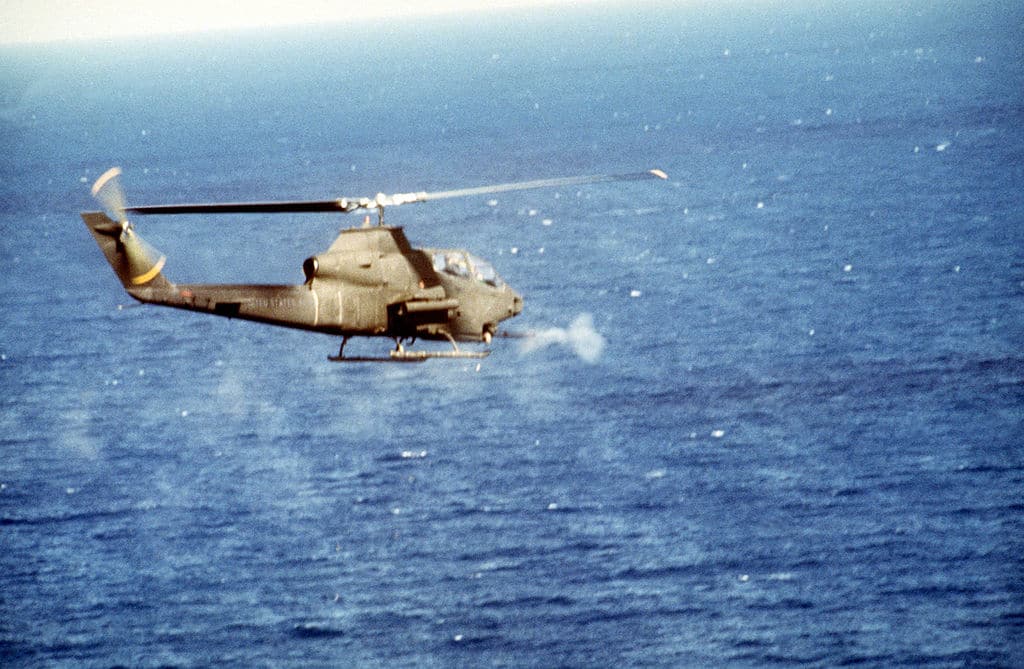
As all this airport assaulting was going on, SEAL Team Six dropped another team off, via Blackhawk, to capture Radio Free Grenada for the PSYOP (Psychological Operations) dudes that came along. (PSYOP guys *love* their radio stations.) Unfortunately, an armored counter-attack by enemy forces led to the radio station being neutralized by the SEALs as they punched out to the nearby jungle.
In other news that day (still the 25th; Day One), simultaneous to everything I have just written — as if all that in and of itself was not epic enough — Delta Force and another Ranger Company set off on 160th Blackhawks and Little Birds to assault Fort Ruppert and Richmond Hill Prison. Ruppert was kind of an enemy Command Post (CP) and the prison held — you guessed it! — political prisoners. Ruppert was lightly defended, and the assaulters managed the OBJ (objective) successfully and with zero casualties, while several enemy leaders were captured.
The prison team, on the other hand, had very little intel moving forward. Anti-aircraft fire forced one Little Bird down, passengers and crew were injured and one pilot was killed. Another Little Bird landed to protect the Deltas at the crash site, while the Ranger element moved to their position.
Another mission running concurrent with all of the 0530 H-hour activity was that of the rescue of the Governor of Grenada, Governor General Paul Scoon. Unfortunately, this rescue team hit their objective somewhat later than the already shootin’-and-movin’ teams all over the island. Thus, although they ingressed and secured the Gov-Gen, enemy forces locked them down at that rescue site. By the evening (~1900), Marines from G Company, 22 Marine Amphibious Unit — with armor and all — counter-counter-assaulted and relieved the SEALs by early the next day (26OCT83).
That sums up — briskly, I might add — Day One of Operation Urgent Fury. The following two days saw continued Conventional force operation(s), with sporadic SOF engagments. Specifically, the 75th Ranger Regiment had various units all over the island conducting varied assaults and rescues. In all varieties of insertion. One of the rescues included 233 U.S. students. One of the assaults included directly attacking a Cuban compound.
Just to hit up my PSYOP bros once more, 9th BN (ABN; Tactical) did manage to distribute lots of leaflets and blast some loudspeakers. I’m all about the abstract assault and mind tricks.
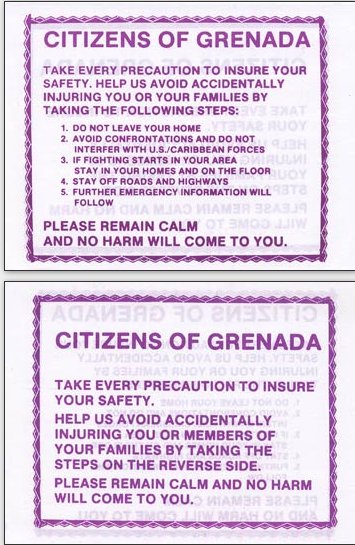
All told, the U.S. suffered 19 killed in action, 116 wounded in action, and lost 9 helos. And the mission was, as they say, “accomplished.” On the bad guy side… we met troops from Grenada, Cuba, USSR, North Korea (yes, you read that right), East Germany, Bulgaria (just because?), and Libya (who in Libya WOULDN’T’VE taken that gig?).
This entire operation was — aside from being successful — an *absolutely invaluable* learning experience for USSOF (and Conventional forces dealing with SOF). Channels that were not open before, suddenly flew open. From Logistics and Personnel, to Recruiting and Training… the stuff that the DoD and Executive Office threw at SOF was literally ground-breaking (I say literally, because there were new HQs being built as a result.)
Now, all SOF-ness aside, one of the most Hollywood things about this op was that Ronald Reagan called Margaret Thatcher on the phone a few hours before go time to let her know the U.S. was assaulting sovereign British soil. She was pissed, but openly supported the act. Redcoats.
Another interesting — yet completely useless — fact about OUF, is that the movie Heartbreak Ridge is a fictionalized account of this operation. AND the units involved in the facts portrayed in the movie were actually Army units. But, given that the movie protrayed less-than-professional officers, the Army opted out of production support.
The Goldwater-Nichols Department of Defense Reorganization Act of 1986 was the single greatest move toward the foundation of USSOCOM. This Act was a direct result of lessons learned from Operation Urgent Fury. And, as you can see today with the Global War On Terror, was one of the prime movers dictating how our military fights.
Good op.
RIP to the fallen.
This article was originally published 5/22/2020
